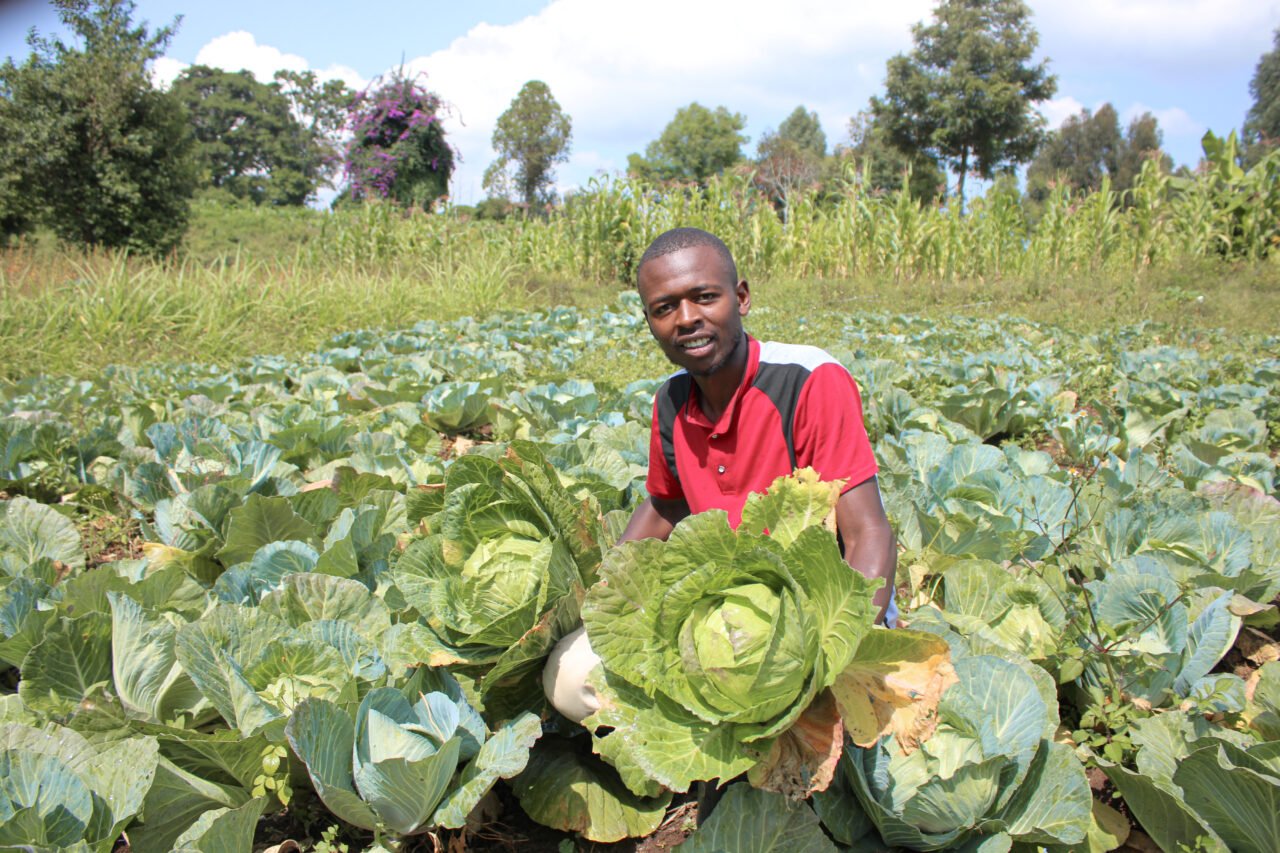Diploma aside, Munene unearths clean money from vegetable farm
He pocketed Sh350,000 last year from carrots, thanks to an economical ‘hydrum’ pump; now he is striving to ensure a sustained supply of vegetables to his customers in dry Laikipia County
Farmer Kelvin Munene has a big, green vision, way beyond the horizons charted by his diploma in Civil Engineering from Thika Technical Institute.
One year after venturing into agriculture in Laikipia County, he has no plan of quitting in favour of a white-colour job or an enviable lifestyle in town. He is content toiling the land and trolling his dream.
Currently, he is tending cabbages at different stages of growth, utilising the one-acre farm given to him by his father to ensure a sustained supply of vegetables to his customers.
The farm is surrounded by patches of dry grass, while the nearby shambas have withered crops and invasive weeds, owing to neglect and poor rains in most parts of the county.
Munene is among those embracing Smart Climate Farming, using economical and environment-friendly water pumps known as hydrum. He sources water from River Murara, which borders Nyandarua and Laikipia counties.
“I got various jobs with construction companies for about three years. But I decided to shift to farming, starting out with a borrowed diesel-driven irrigation pump. With the initial sale of Sh350,000 from carrots, I learned about the hydrum irrigation pump that doesn’t need fuel, and I bought it” says the young farmer.
Let the land rest
The cabbages are mainly Gloria FI, which take about one month at the seedbed before transplanting. He has planted the cabbages on a section that had carrots last year. After harvesting the carrots, he let the land rest for three months before planting the vegetables.
During the month the cabbage is in the seedbed, Mr Munene prepares the land for planting. The preparation includes digging 30 centimeters deep to soften the soil for easy establishment of roots.
He then prepares shallow furrows into which he applies manure, covering them with weeds from the fallow section. “The weeds serve as mulching, conserving the moisture. They will have composed in about a month after transplanting the seedlings, assuring the crop of sustained soil fertility,” he explains.
While transplanting, he does a spacing of one foot squared between the rows and the plants, then applies a teaspoon of top-dressing fertiliser a month after this. With such application, an acre takes an average of three bags of the top-dressing fertiliser.
“The other important thing is weed control, but with proper mulching, this challenge is minimised. I plan my farm by dividing it into quarter-acre pieces for easy management and also for marketing purposes. That way, I have a sustained supply for my customers and less susceptibility to glut,” explains Munene.
With the hydrum pump, he uses sprinkling irrigation which also controls pests and insects, irrigating the farm three times a week. “It was not possible to irrigate three times a week using the diesel water pump, which cost me about Sh1,500 each time I sprayed, translating to KSh6,000 a week. Cabbage is a heavy feeder of water,” says the farmer.
Tackling cutworm pests
After the top dressing, the cabbages will be ready for harvest in one-and-a-half months, meaning a total of about three months from transplant. He says the biggest challenge is cutworms that attack cabbages soon after transplanting, and that is the only time he does pest control.
With his spacing, an acre holds an average of 10,000 plants, which means he can supply 2,500 cabbages every three months. The lowest he has sold a cabbage for is Sh40 a piece, making a total of Sh100,000 per each quarter-acre piece of land.
With free water from the hydrum irrigation pump, the main cost of production is fertiliser, which goes for Sh2,500 per bag at the government subsidy programme.
“The total cost of production per quarter acre is about Sh10,000 – inclusive of seeds, manure, labour, and fertiliser. I am planning to increase my farm by three acres by August. I have already leased the extra farm. This was just a trial that has worked well, and I have realised that it makes more sense to work on bigger land. That way, I will be able to effectively practice crop rotation. Laikipia is dry, meaning we always have a ready market for cabbages,” he adds.
His vision of large-scale farming is supported by agronomist Lucy Wangechi, as it fetches better profits. Ms Wangechi says cabbages grown under irrigation in dry areas have a unique, enticing taste preferred by many consumers. The hot weather accelerates the crop’s maturity period, she notes.



